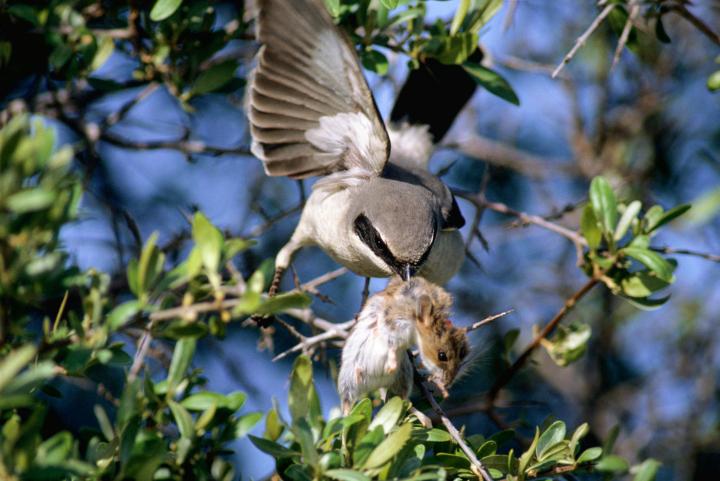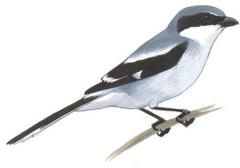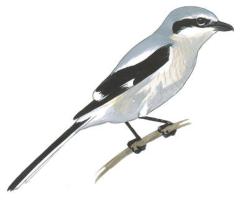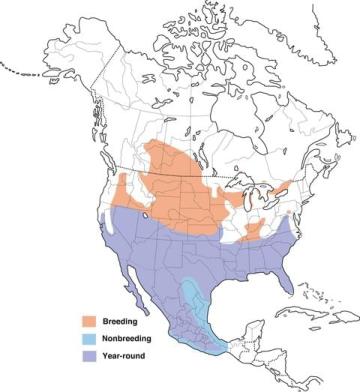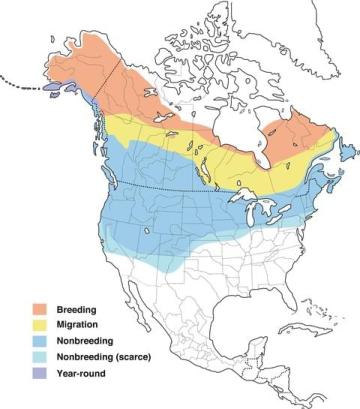 |
Canku Ota
|
 |
|
(Many Paths)
|
||
|
An Online Newsletter
Celebrating Native America
|
||
|
October 2018 - Volume
16 Number 10
|
||
|
|
||
|
Shrikes Have An Absolutely
Brutal Way Of Killing Large Prey
|
||
|
by Hannah Waters - Senior
Sssociate Editor at Audubon.org.
|
||
|
Famous
for impaling their victims, these songbirds first use a special
maneuver to break the necks of small rodents.
It’s no secret that the shrikes are formidable predators. The grayscale songbirds of the open country might look as harmless as mockingbirds, but these black-masked “butcherbirds,” as they’re known, pack more fierceness ounce for ounce than any other bird in the country.
The nine-inch carnivores catch and kill a wide variety of prey—grasshoppers, crickets, beetles, lizards, mice, frogs, and small birds—that can often be as big as they are; one was once observed carrying off a Northern Cardinal after "a noisy struggle lasting less than a minute, by which time the cardinal was dead." On top of that, their lifeless quarry can be seen gruesomely impaled on sharp objects like twigs and barbed wire throughout the southern United States and northern Canada, where Loggerhead Shrikes and Northern Shrikes range, respectively. (The Loggerhead population has declined by more than 80 percent since the 1960s, possibly due to pesticides killing their insect prey.) This macabre behavior, which is not a Game of Thrones-esque warning to other birds but a form of food storage, led Wired to declare the Loggerhead Shrike “by far the most metal of birds.” The editorial staff of Audubon are inclined to agree. But while ornithologists have long known that shrikes impale their prey, no one knew for certain how these songbirds managed to catch and kill relatively large vertebrates. A new analysis of high-speed video footage finally reveals the answer: They grasp mice by the neck with their pointed beak, pinch the spinal cord to induce paralysis, and then vigorously shake their prey with enough force to break its neck. Okay, then. The shrike's hunting strategy is often compared to that of raptors like eagles, hawks, and falcons: They’ll sit on an elevated perch, scan the ground below, and pounce on any spotted prey. But this new research, which focused specifically on Loggerhead Shrikes, shows that the two have vastly different kill methods. Raptors have powerful wings to carry heavy loads and sharp, strong talons to catch prey, as well as to manipulate and tear flesh apart. Shrikes, though, are stuck with dinky passerine feet—good for little except delicately perching on branches. This lack of leg musculature and weaponry needed to withstand a struggle means the songbirds have to kill quickly. As the new study reveals, once shrikes induce paralysis with a precise bite to the neck, they roll their heads rapidly to vigorously shake their immobilized food. According to the researchers, this back-and-forth whipping motion generates accelerations of up to six g-forces—roughly the same amount of force felt by passengers on high-g rollercoasters, or the whiplash experienced by victims of low-speed, rear-end car crashes. This is more than enough force to snap the vertebrae of a large rat or break a mouse’s neck, and it’s all generated by the roll of a Loggerhead Shrike’s head. A headbanging, prey-impaling death-bird? You can't get much more metal than that.
Loggerhead
Shrike
Slow-motion video reveals ‘killer whiplash’ butcherbirds use to take down prey
|
||||||||||||||||
|
|
||
|
|
||
| Canku Ota is a free Newsletter celebrating Native America, its traditions and accomplishments . We do not provide subscriber or visitor names to anyone. Some articles presented in Canku Ota may contain copyright material. We have received appropriate permissions for republishing any articles. Material appearing here is distributed without profit or monetary gain to those who have expressed an interest. This is in accordance with Title 17 U.S.C. Section 107. | ||
|
Canku Ota is a copyright ©
2000 - 2018 of Vicki Williams Barry and Paul Barry.
|
||
 |
 |
|
|
The "Canku
Ota - A Newsletter Celebrating Native America" web site and
its design is the
|
||
|
Copyright ©
1999 - 2018 of Paul C. Barry.
|
||
|
All Rights Reserved.
|
||
